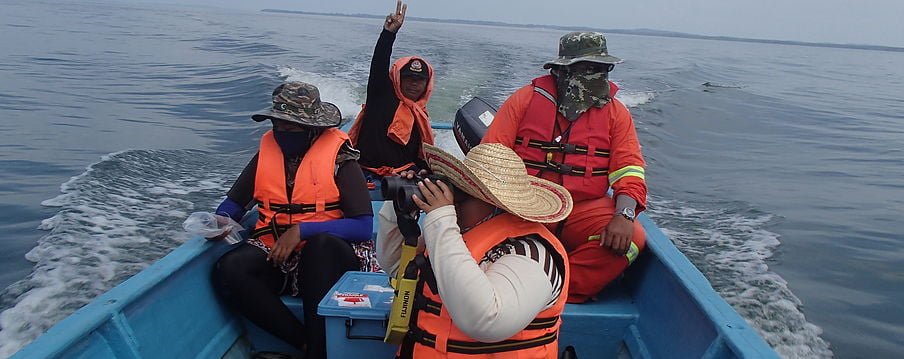Unfolding the Dugong Stories of the Malaysian Bay of Brunei
January 01, 2016
Marine Mammal Research Group, Marine Endangered Species Program, Higher Institution Centre of Excellence (HICoE), Institute of Oceanography and Environment, Universiti Malaysia Terengganu.
For the past two years and still going strong, the Marine Mammal Research Group (MAMREG) of the Marine Endangered Species Program by the Institute of Oceanography and Environment, Universiti Malaysia Terengganu (INOS-UMT) had been flying across the South China Seas four times a year to conduct research on dugongs and other cetaceans in the Malaysian Bay of Brunei.
The Bay of Brunei is a large cupped, indented bay largely fringed with mangrove forests located on the south-west coast of Sabah facing the South China Sea. The bay is a special kind of area where it is governed by four political entities, split internationally between Malaysia and Brunei. In Malaysia, the bay consists of three different Malaysian states of Sabah, Sarawak and the Federal Territory of Labuan. Marine resources within the bay are very rich and are highly valued among the locals there as coastal fisheries form the main economic activity of the community.
For dugong studies, MAMREG had conducted continual research to assess the (1) occurrence, distribution, abundance of dugongs in the bay, (2) dugong interaction with local fisheries and (3) understanding the local’s opinion and cultural beliefs towards dugongs. An interview survey to collect the communities’ past and current knowledge on dugongs as well as a quad-annual boat survey executed since mid-2013.
The interview survey was conducted in 16 fishing villages within the Malaysian Bay of Brunei including the Federal Territory of Labuan with 221 fishermen taking part in the interviews. At the same time, the quad-annual (i.e. January, April, July, October) boat survey was done by a predetermined transect line stretching along the coast from Lawas, Sarawak to Labuan. It is hoped that through this research, we could gain a deeper understanding of the current population status, local movement and existing traditional affiliations of dugongs in the Malaysian Bay of Brunei and its adjacent waters.
